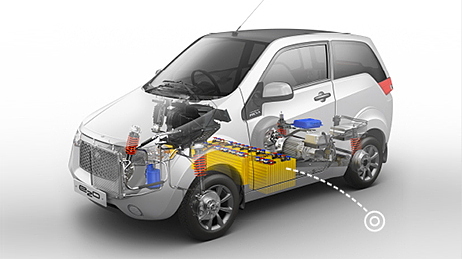
Now that we know how the batteries have shaped up the progress of electrical vehicles over the years, we try and elaborate on another aspect that is as important for an EV as the brain for us humans. The ability to store and deliver electrical energy is one part, but using it judiciously and effectively is also very important. Minimizing the consumption of electrical energy is instrumental in extending the number of miles the EV can traverse and hence boost its practicality.
When the expected range of the electric cars was a couple of scores of miles and battery technology not even out of its nappies, it was only about getting the cars to run. But as the automobile evolved, a lot of things got added to the list of to-dos on energy resource. The starter, headlamps, interior lamps and the music system were the early ones on the list. As technology progressed, you have the ECM, injectors, power steering motor, power seats, power mirrors, electrical sunroof, ABS motors et al piling up on the source of energy.
The onus, hence, is on the judicial usage of the limited resource available in the battery. Lesser the electricity used for running the car would result in better range. Here is where the chip revolution came to the fore. Computing has had a massive role in optimizing everything around. The earlier chipsets helped sync the throttle input to load on the motor and the required output which helped regulate the electric current output from the batteries.
As computing advanced, the response time of chipsets has gone into nanoseconds. This means, the on-board computer can now calculate the exact power required in real time. It can vary currently from zero to 100 per cent of rated output every hundredth of a second to achieve maximum efficiency. And then you have systems like regenerative braking that help harvest electrical energy that would have otherwise been lost making the system even more efficient.
The chip revolution has helped car makers like Nissan, Renault, Mahindra, Tesla and others to build modern electric cars that can compete with mammoths like the Veyron and beat them at their game while ensuring zero emissions from the car. For example, Mahindra e2o boasts of 10 on-board computers and an Intelligent Energy Management System (iEMS) that ensures the most optimum energy utilization from the battery. Such advancements in the computing technologies have helped the energy efficiency of EVs to improve to almost twice as much as their ICE counterparts, paving the way for a more energy efficient future.
source”gsmarena”